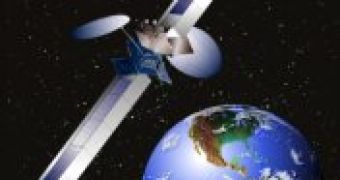Saab Space, a company headquartered in Gothenburg, Sweden, announced it has received an order for hundreds of antenna elements for Boeing Space and Intelligence System?s new, hi-profile Mobile Satellite Venture (MSV) system satellites. MSV is the first generation system of mobile satellites that uses a combination of satellite capacity and terrestrial cell-phone capacity. The user will all the time be connected through the most efficient channel available depending on local coverage, using the same handset.
MSV is based on a patented technology called Ancilliary Terrestrial Component (ATC) that combines advantages of satellite and terrestrial technologies. The voice and data services of the system will be available initially throughout North America including Alaska, Hawaii, Mexico and the Caribbean basin by using the two first satellites MSV-1 and-2. For the future, development of full South American coverage is an optional possibility by adding a third satellite to the system.
The order received is for 204 antenna radiating elements for the phased array feed of the very large reflectors for the first two satellites. These antennas elements build on design heritage from Thuraya and ICO mobile satellites. In contrast to the earlier projects, these elements have dual polarization. The elements need to cope with a combination of stringent performance requirements and requirements for low mass and low production cost due to the large numbers needed. These elements are to be integrated into the antenna system by Boeing, at its satellite manufacturing facility in El Segundo, California. The order also includes three antennas of two different types per satellite for Telemetry and Telecommand communication at Ku-band frequencies.
The satellites, scheduled for launch in 2009 and 2010, will be among the largest and most powerful built, with 11 kW of solar panel power and with a 22 meter L-band reflector antenna.

 14 DAY TRIAL //
14 DAY TRIAL //